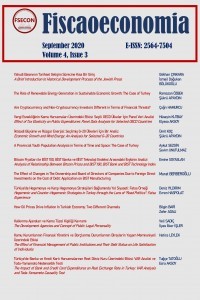
Fiscaoeconomia
Yazarlar: Nihat DAĞISTAN
Konular:Sosyal Bilimler, Disiplinler Arası
DOI:10.25295/fsecon.2019.02.001
Anahtar Kelimeler:Global Value Chains,Vertical Specialization,Input-output Model,Turkey
Özet: The structural transformation in production and foreign trade in global economy concentrates on global value chains and vertical specialization. These two concepts specifically clarify the reasons why trade in intermediate goods increased more than trade in final goods. This comparison depicts trade-in value added, in general, and trade in domestic and foreign value added in export and import goods, in particular. In this study, vertical specialization ratios for 35 distinct sectors, which were grouped based on ISIC Rev. 3 criteria for a period between 1995 and 2011 in Turkey, were calculated by using World input-output Database (WIOD). In addition, the fluctuations in domestic and foreign value added in gross export were analyzed both at aggregate and sectoral levels. Findings of the study indicated that vertical specialization ratio for Turkish foreign trade has shown a drastic change. This study also highlighted that the sectors that revealed the highest intensity level in vertical specialization were respectively basic metals, fabricated metal and transport equipment.